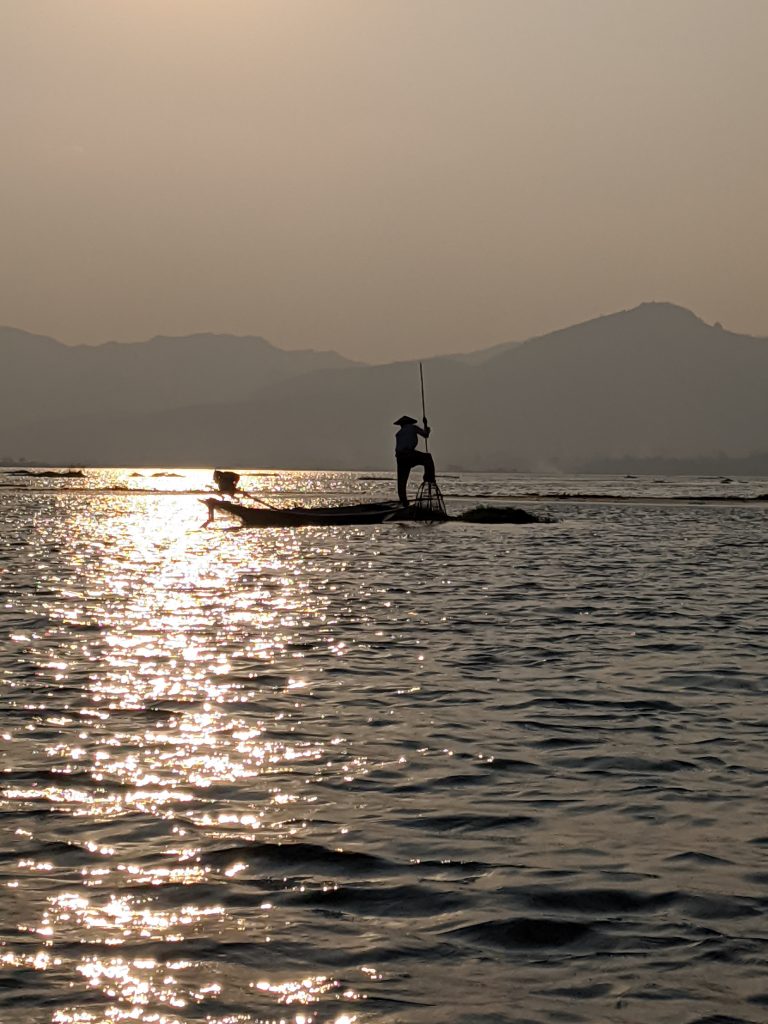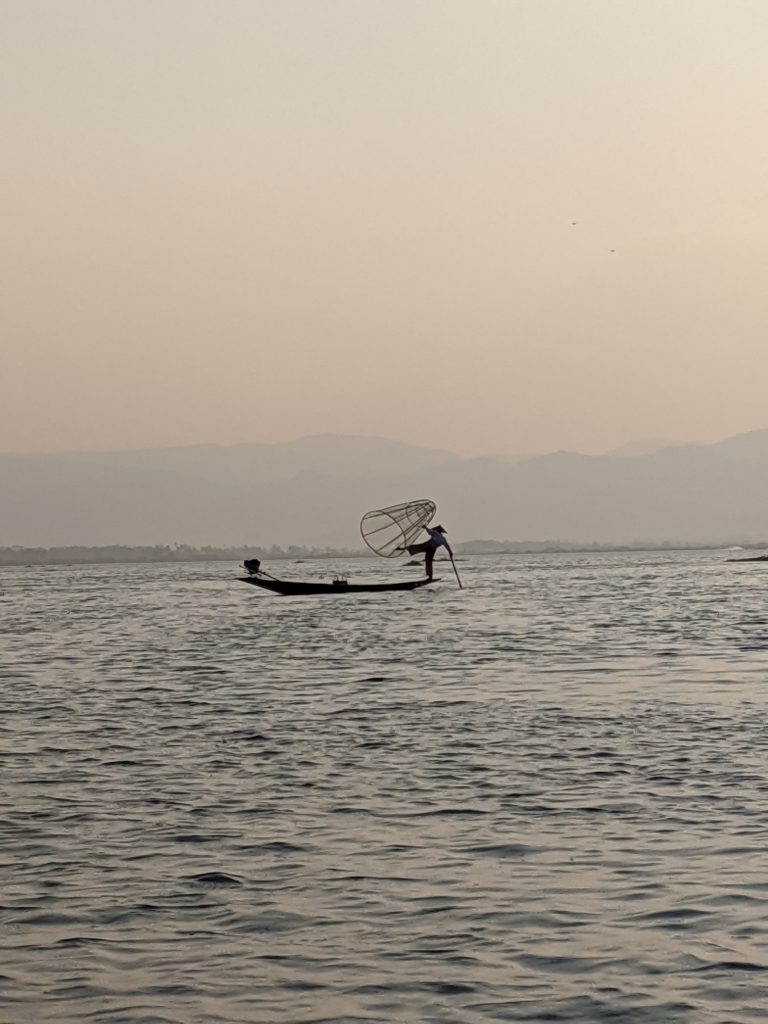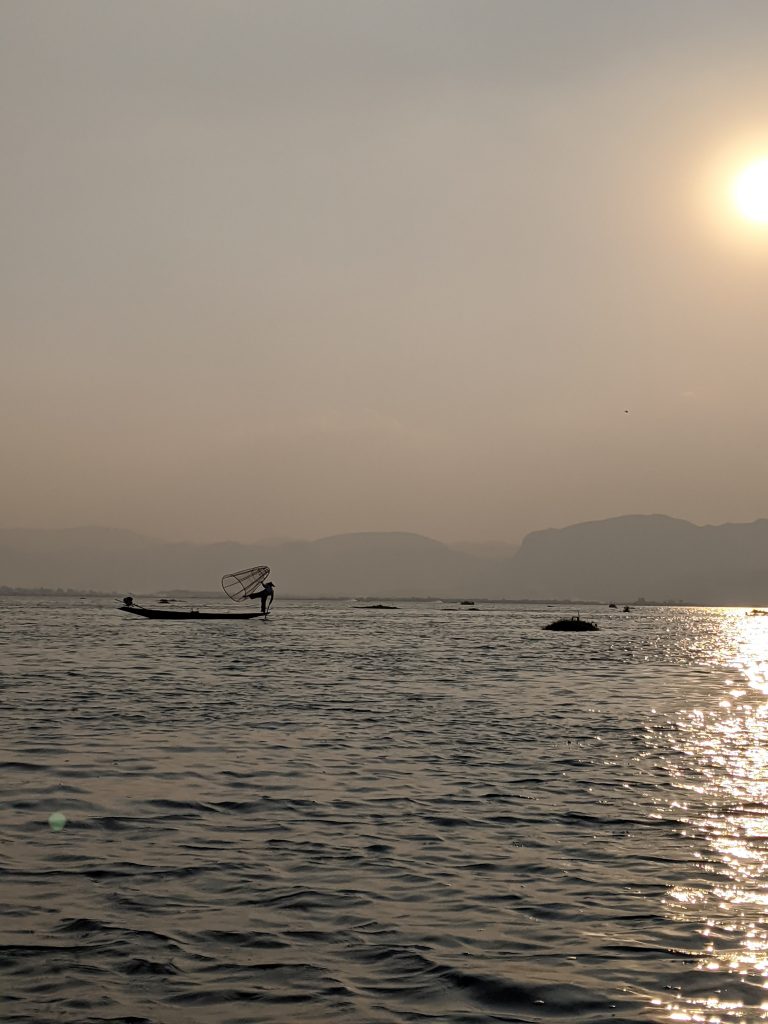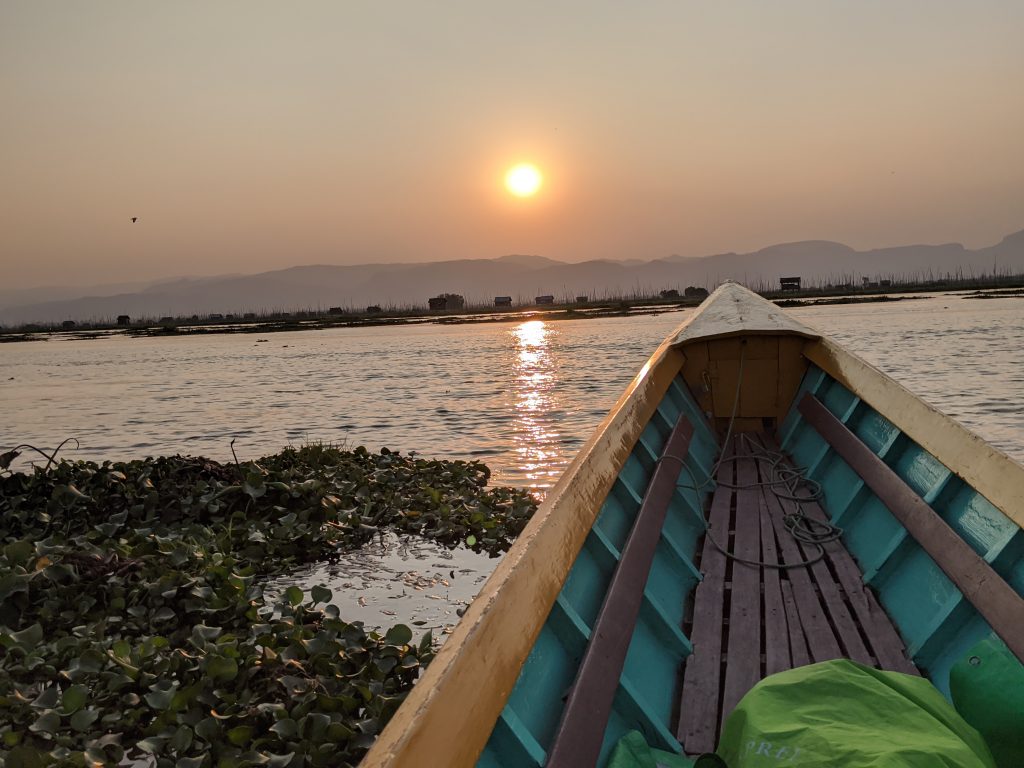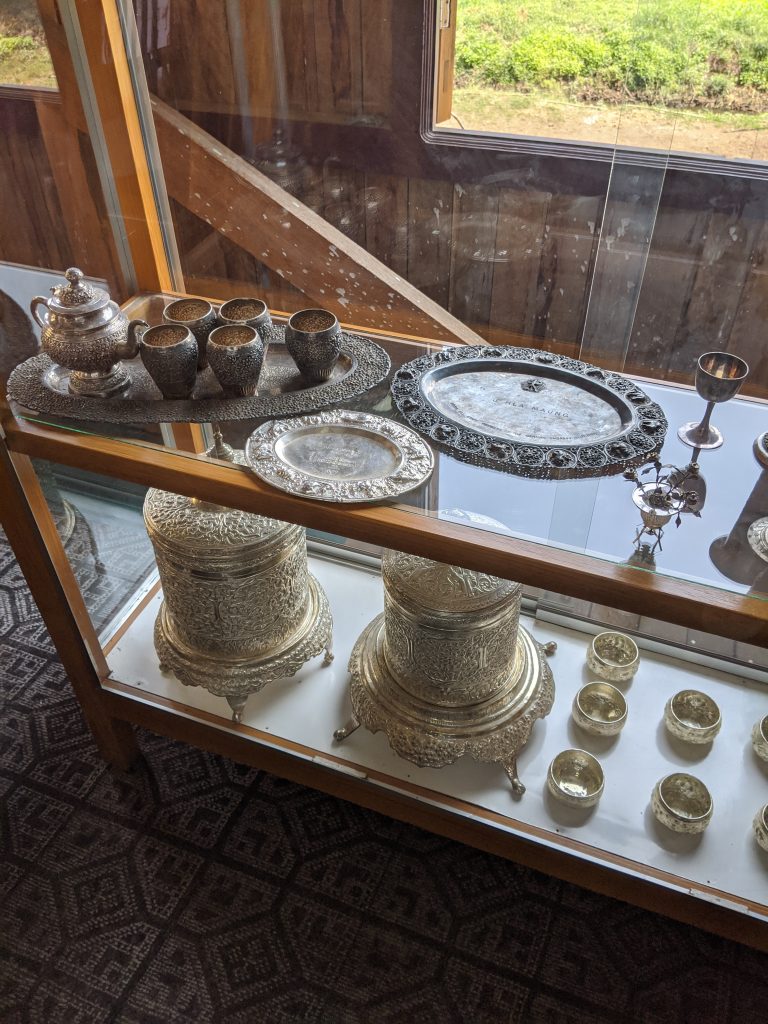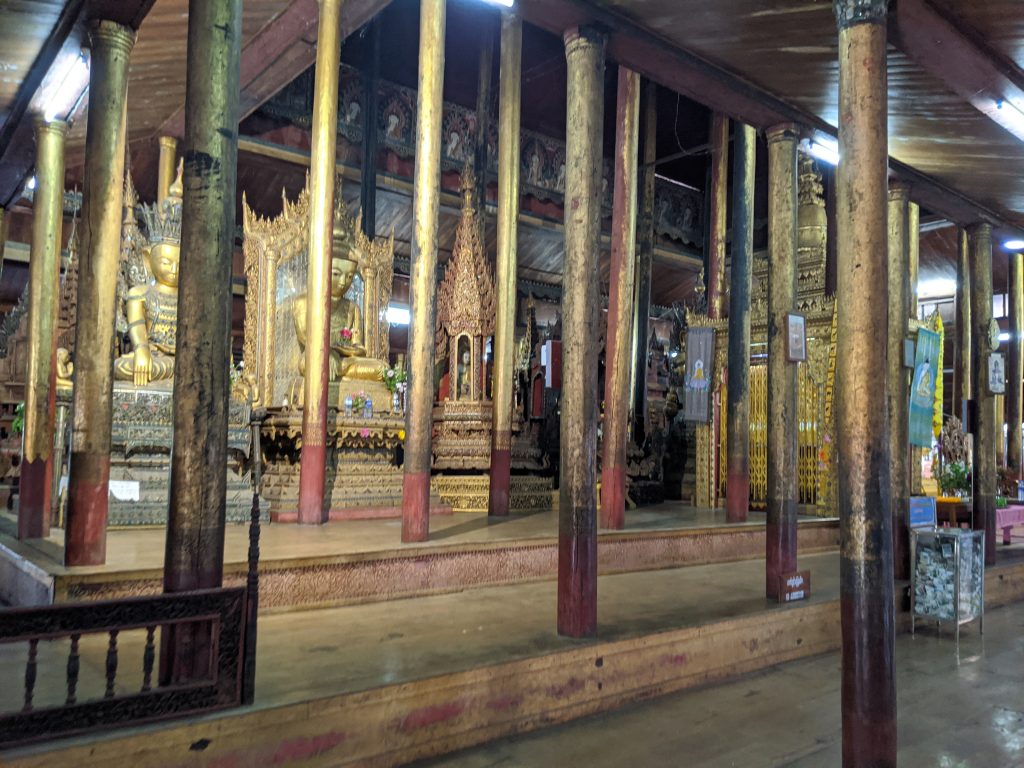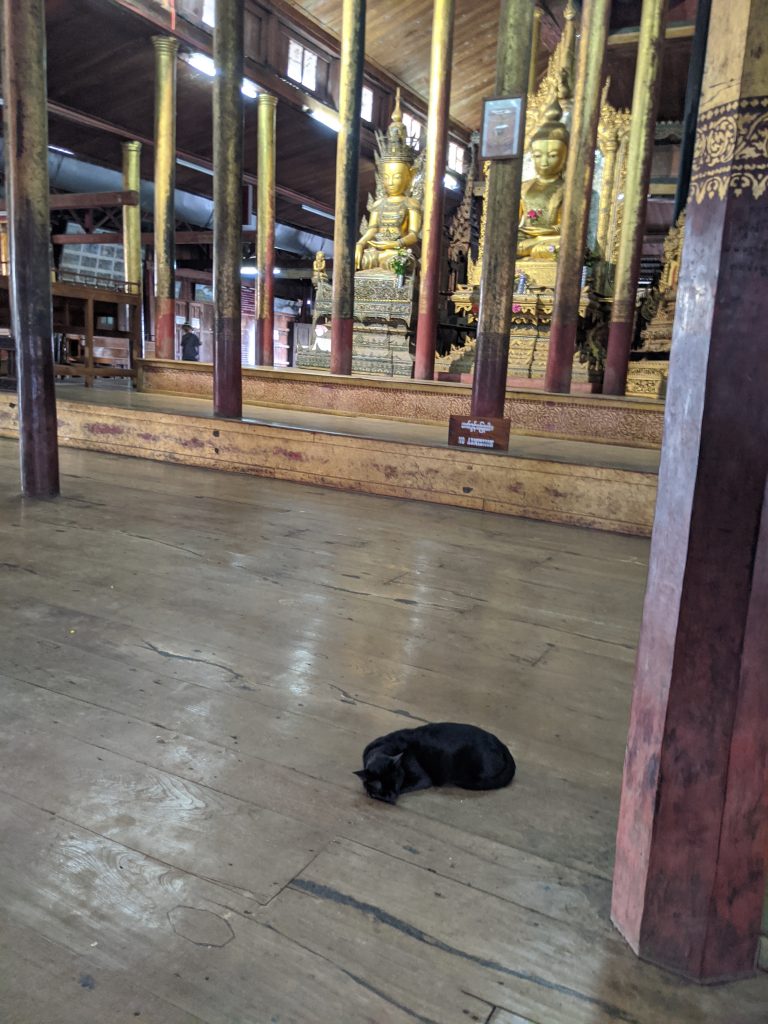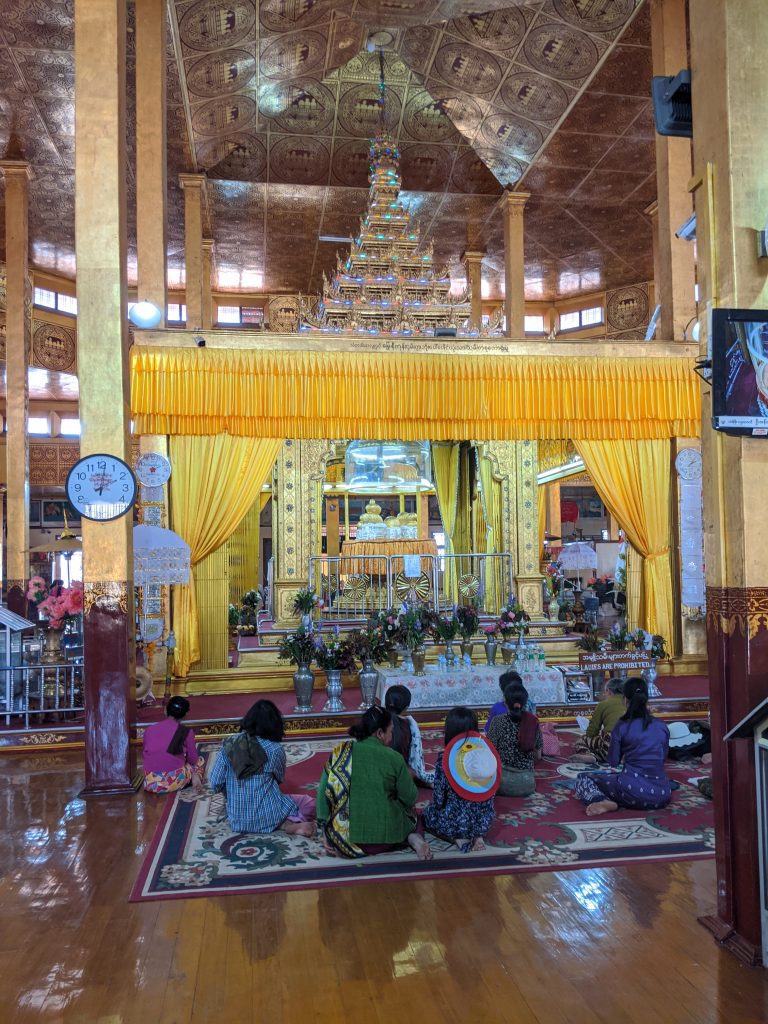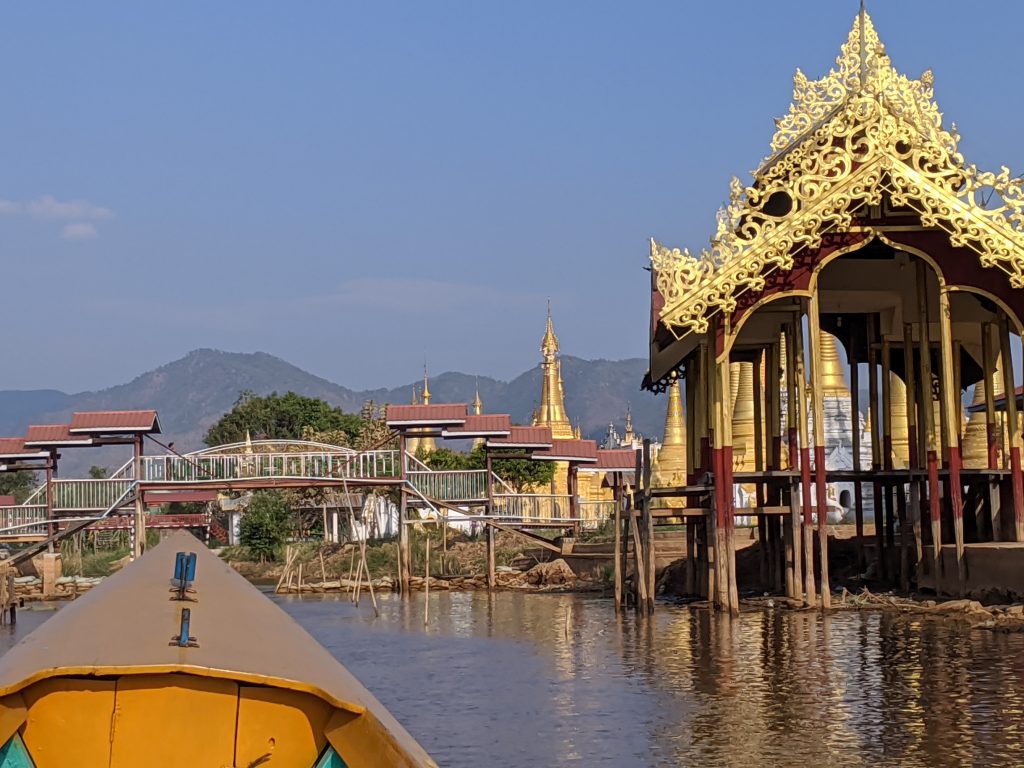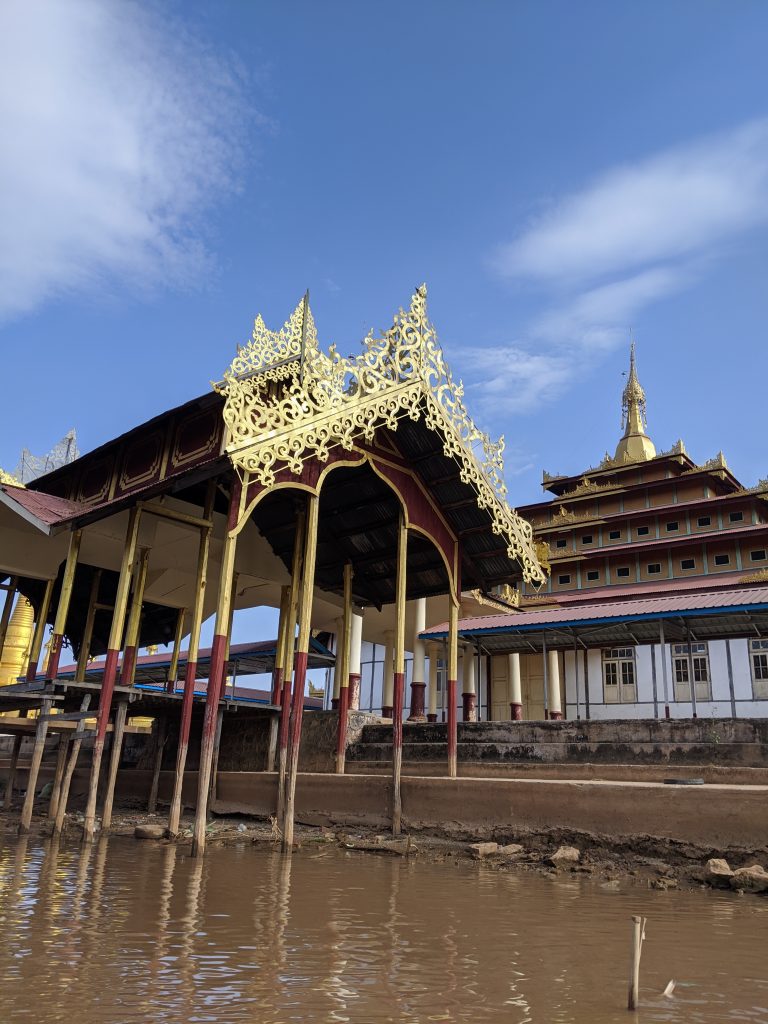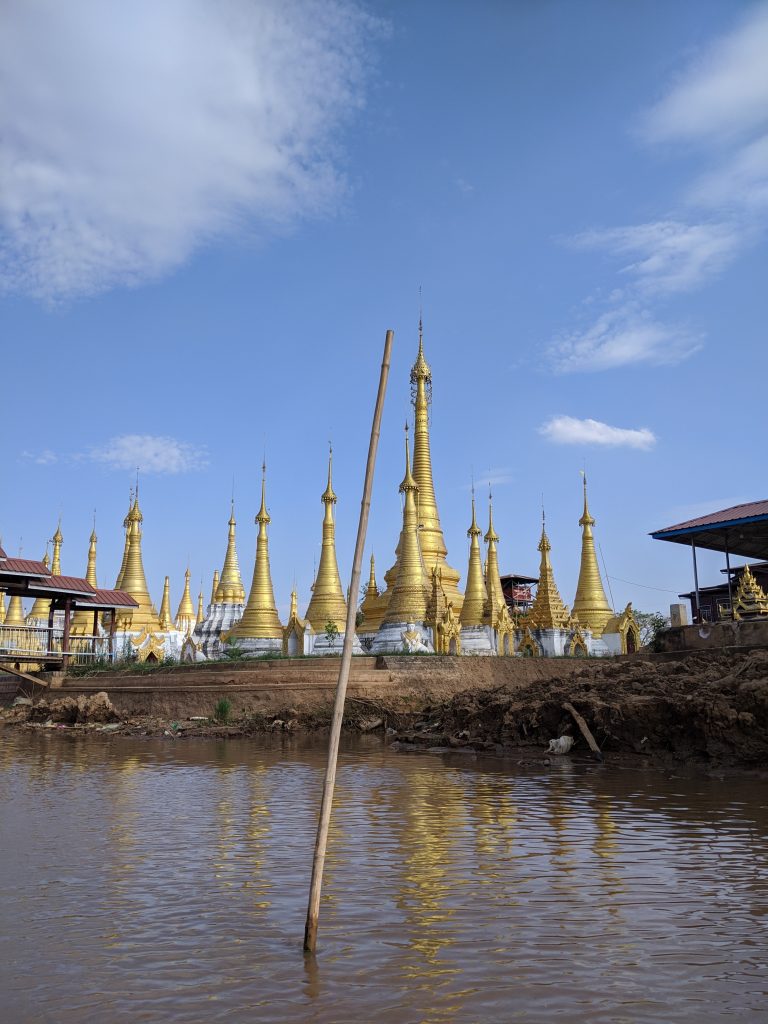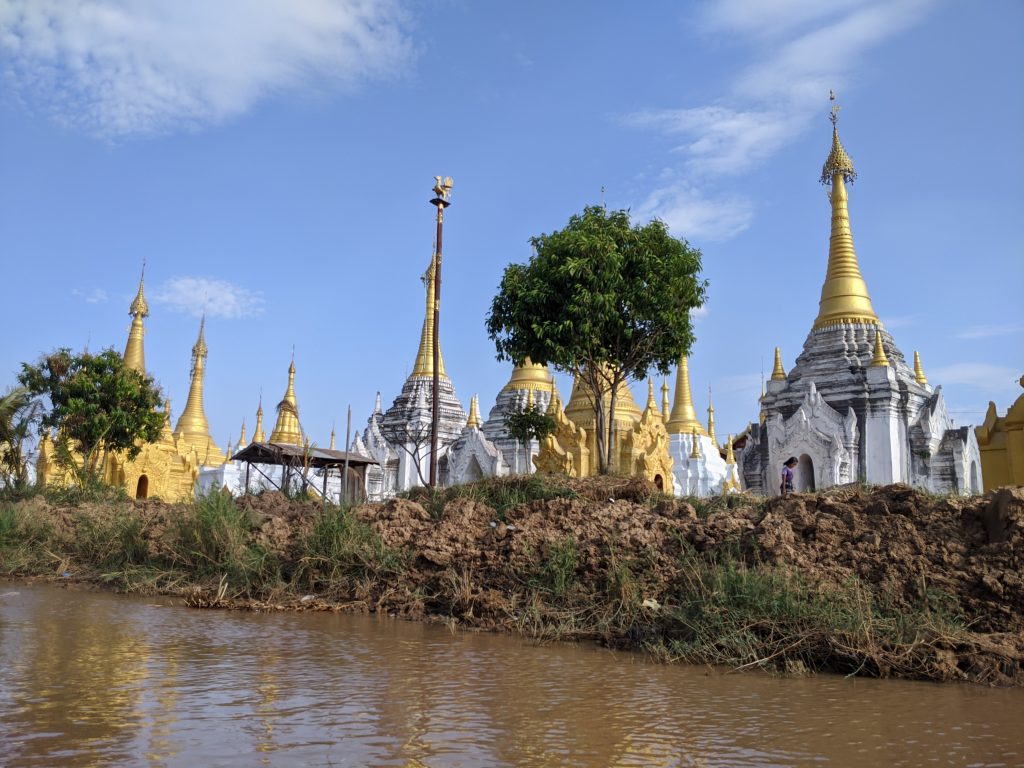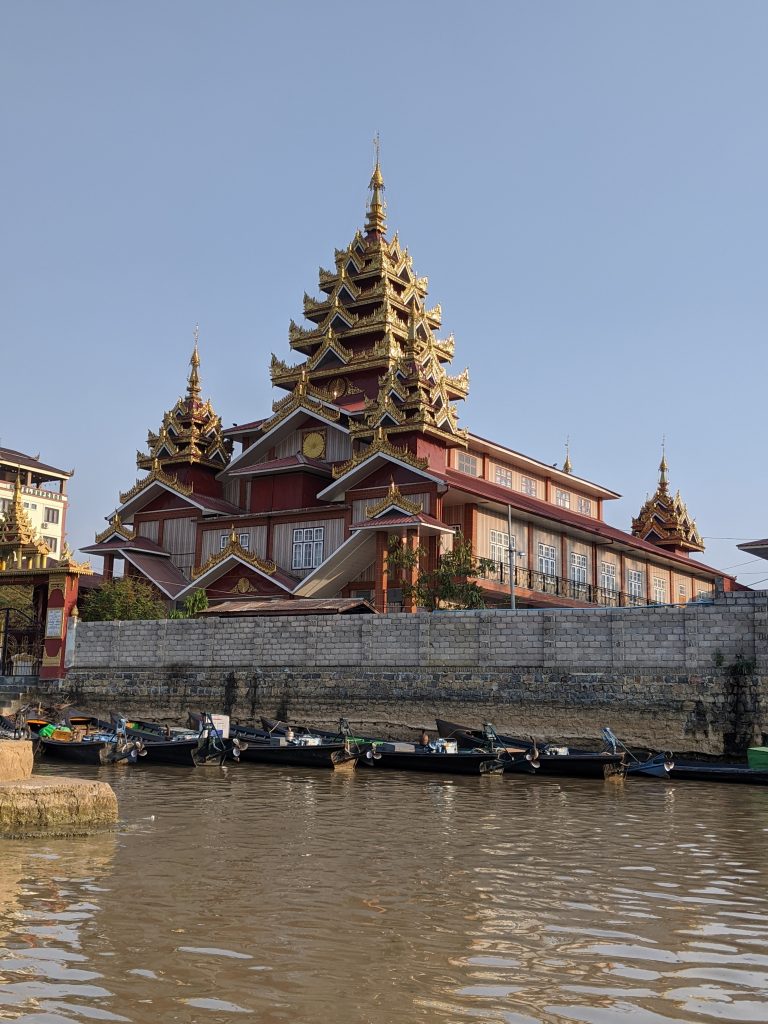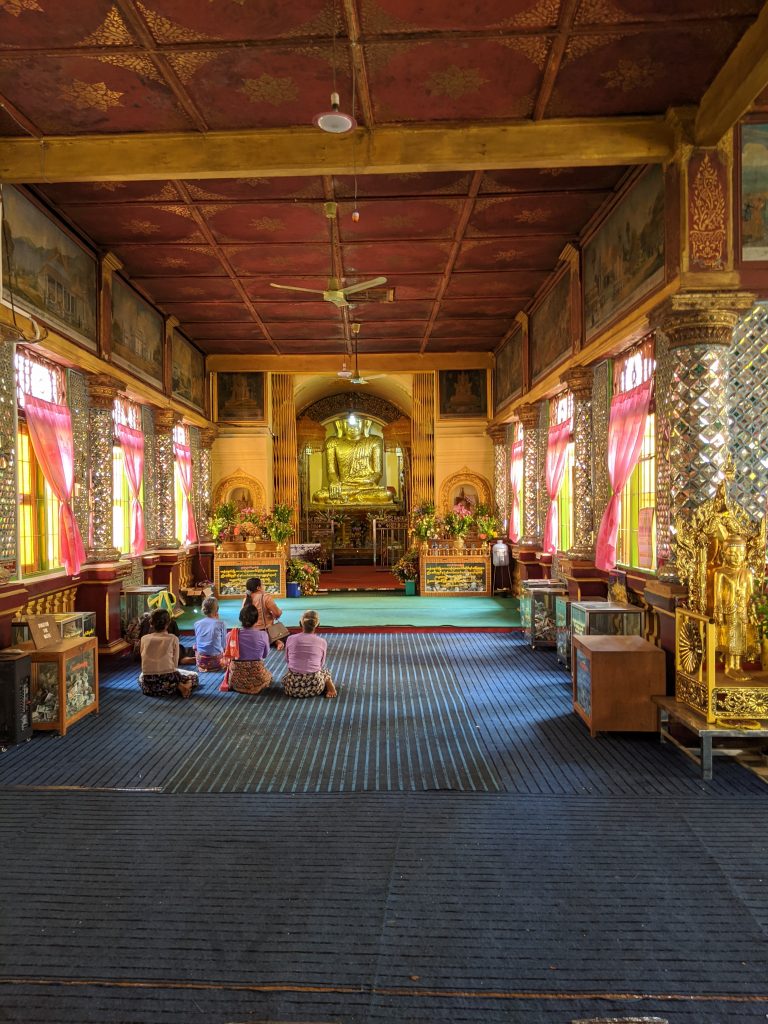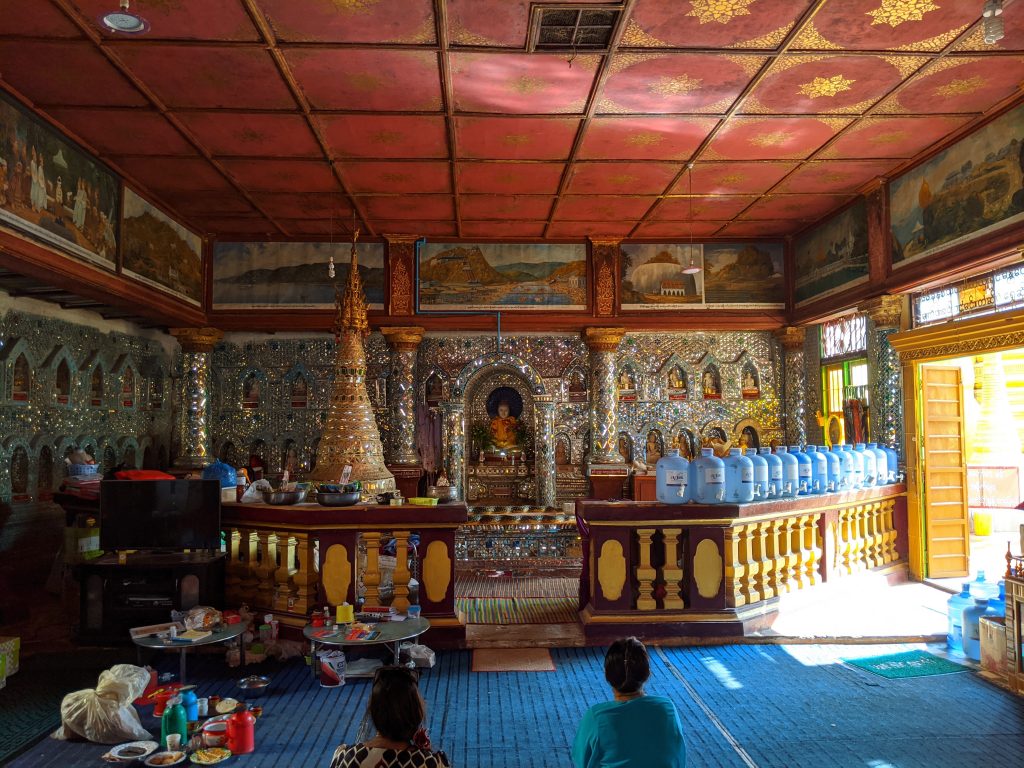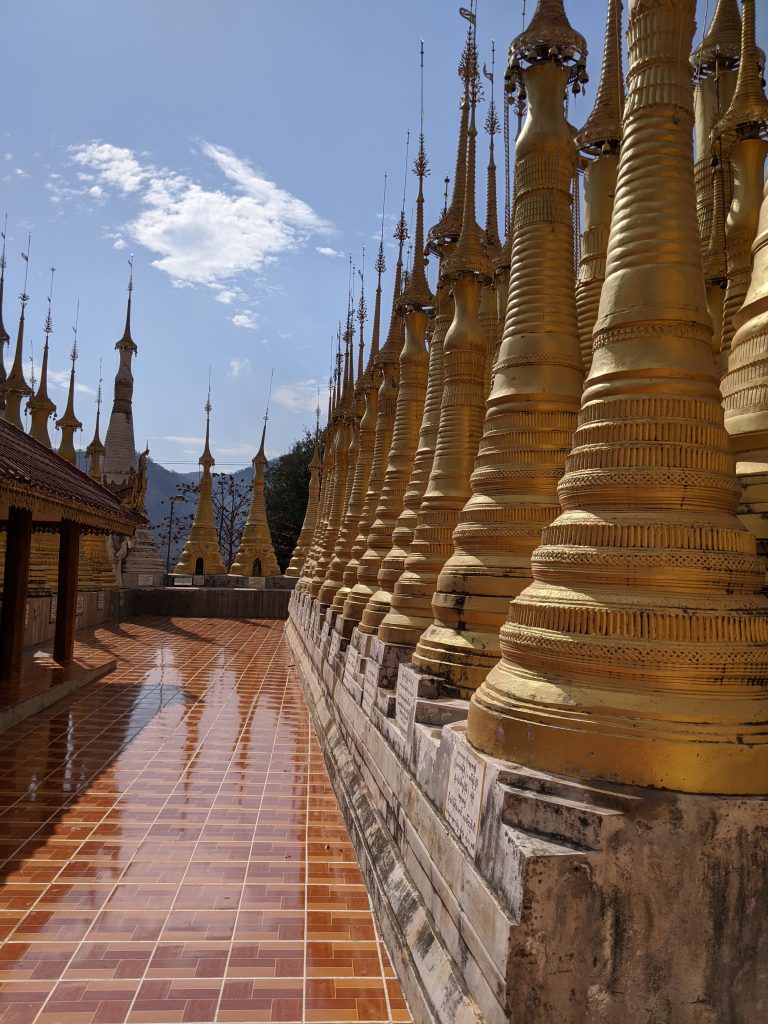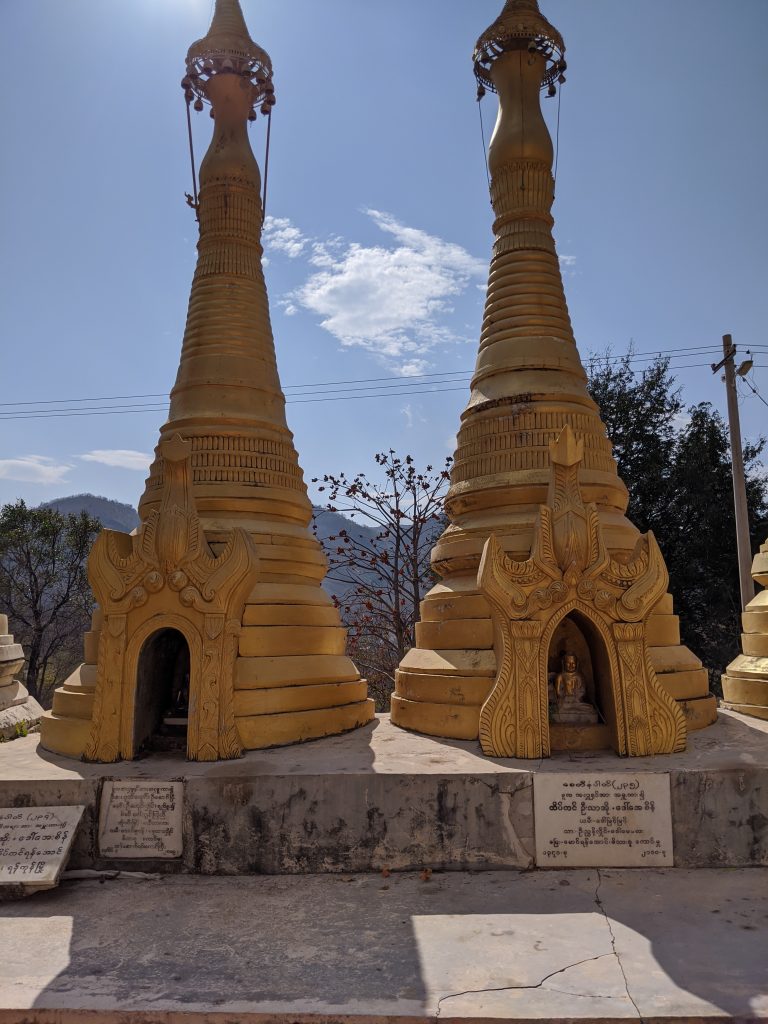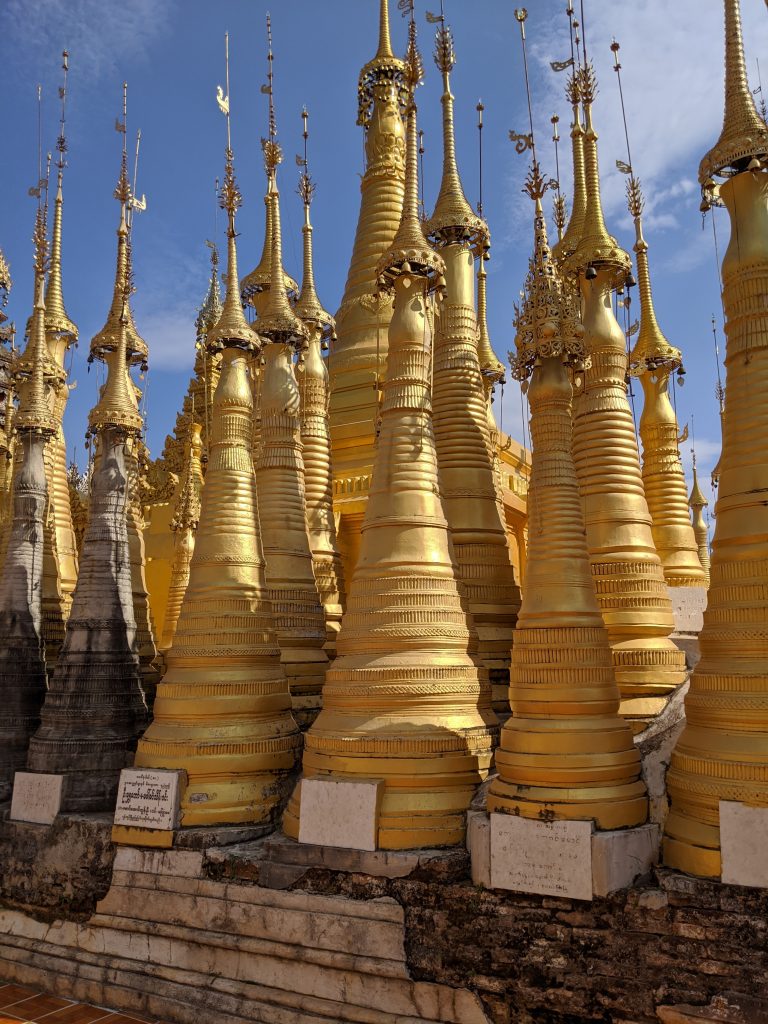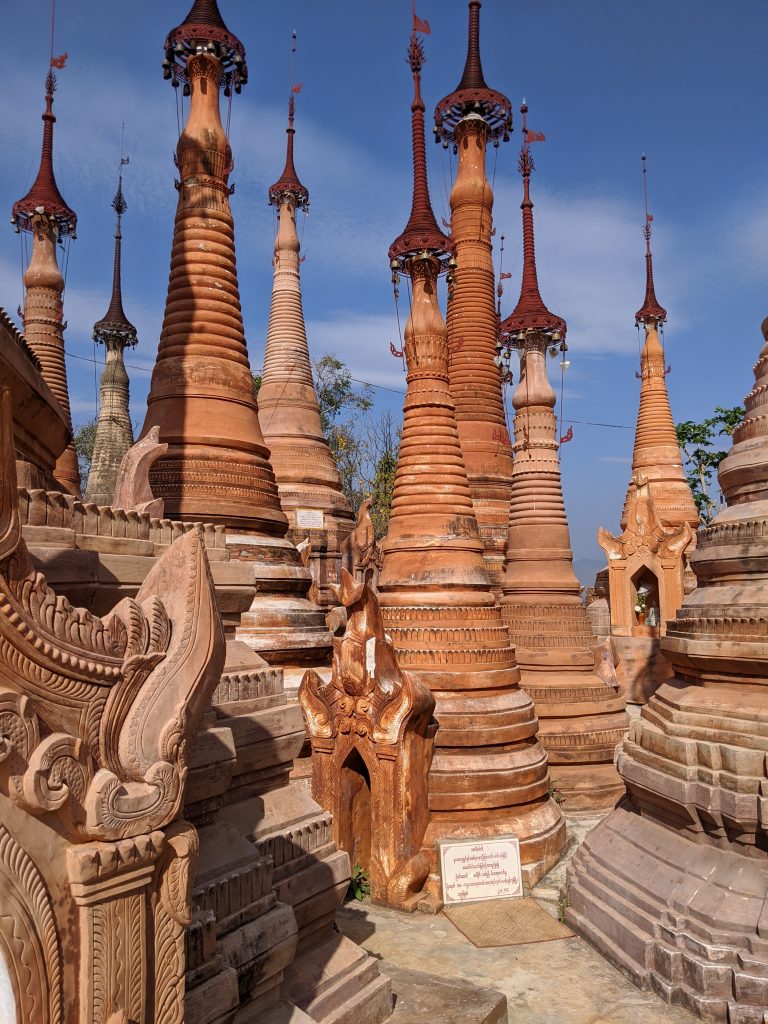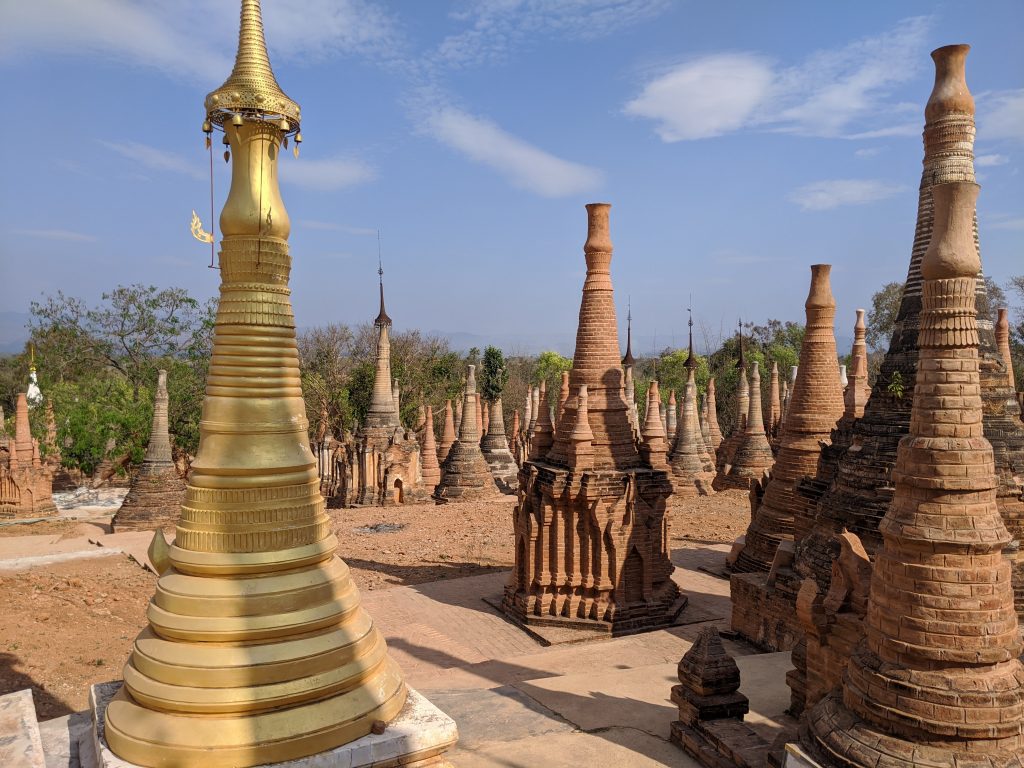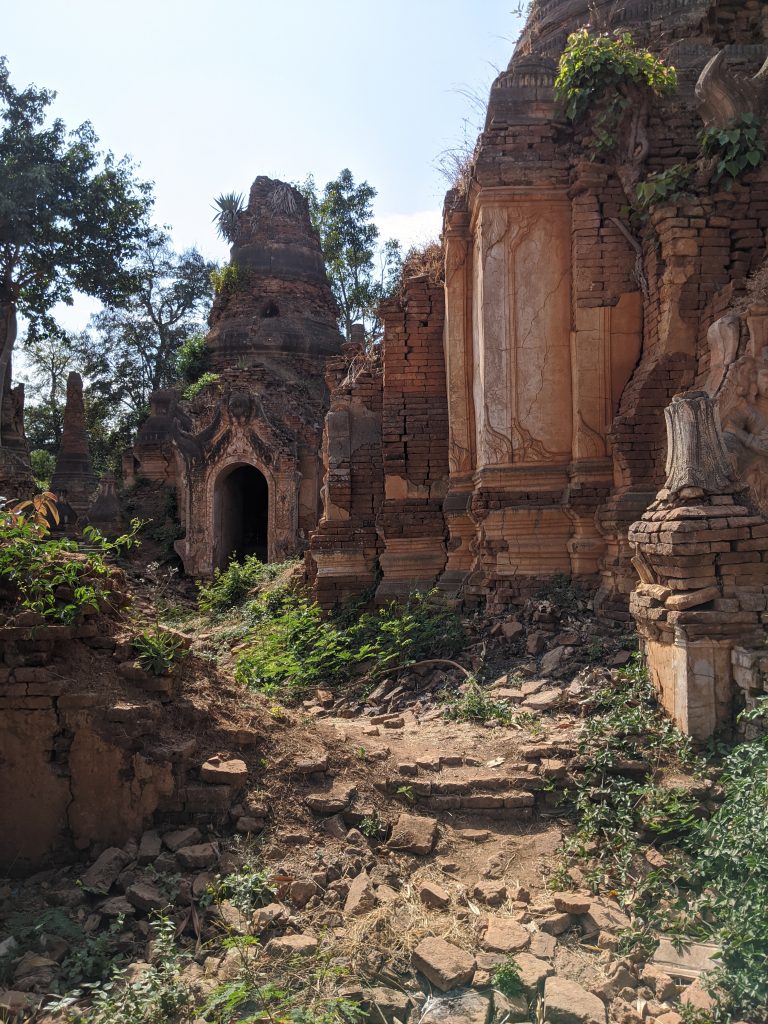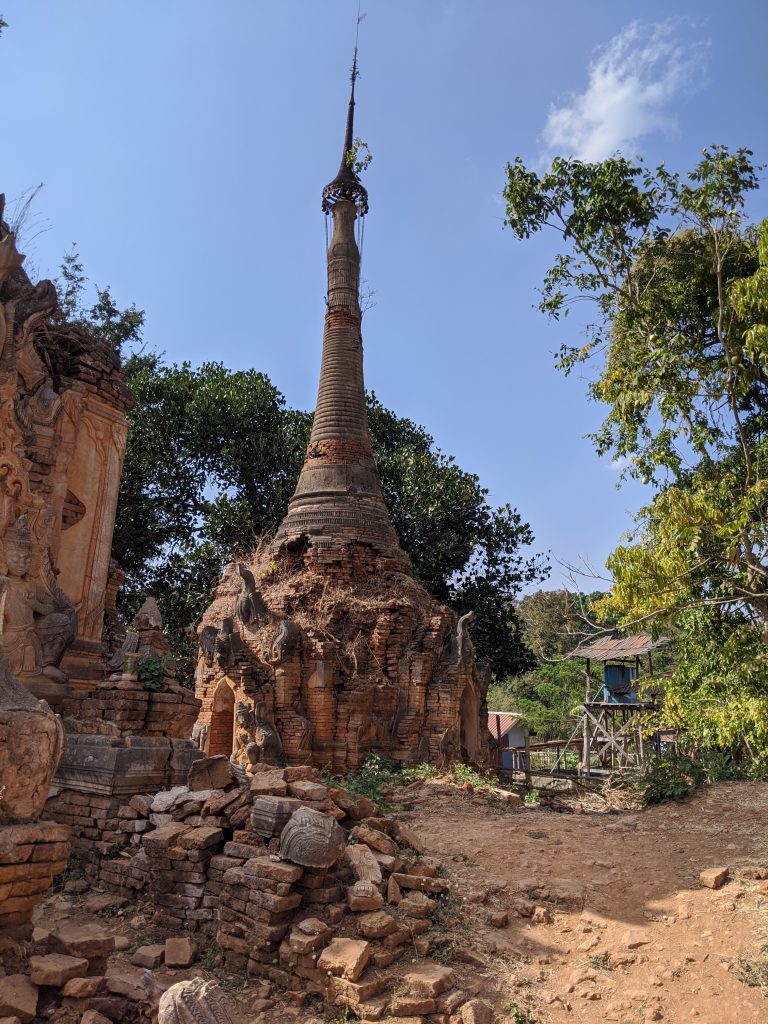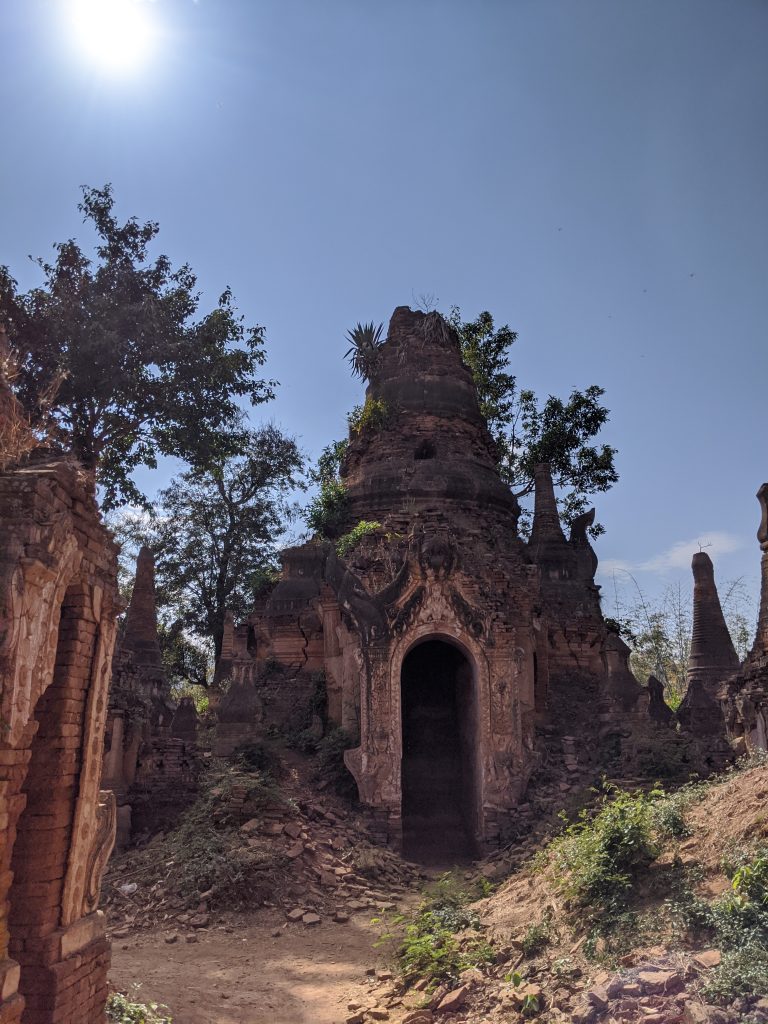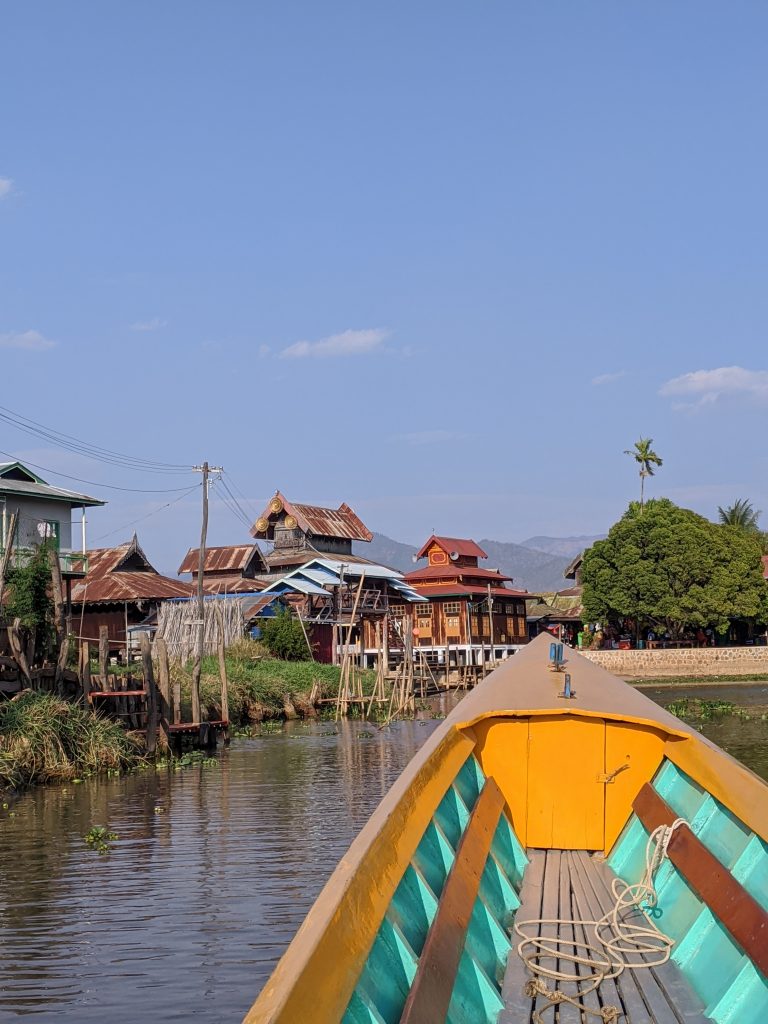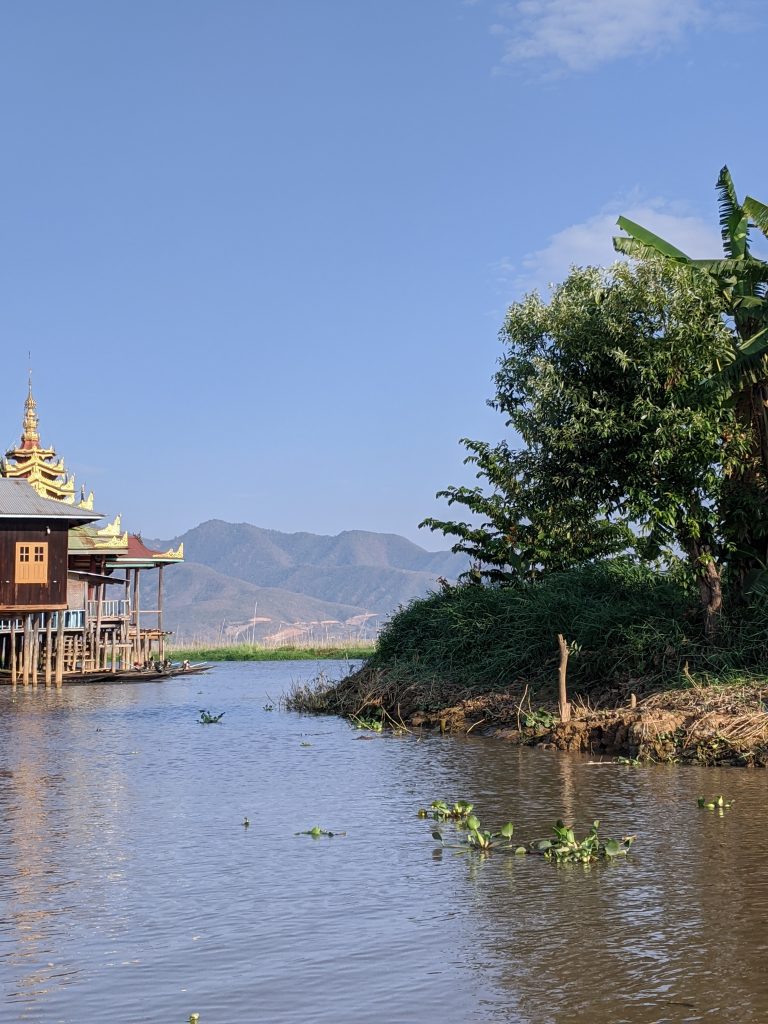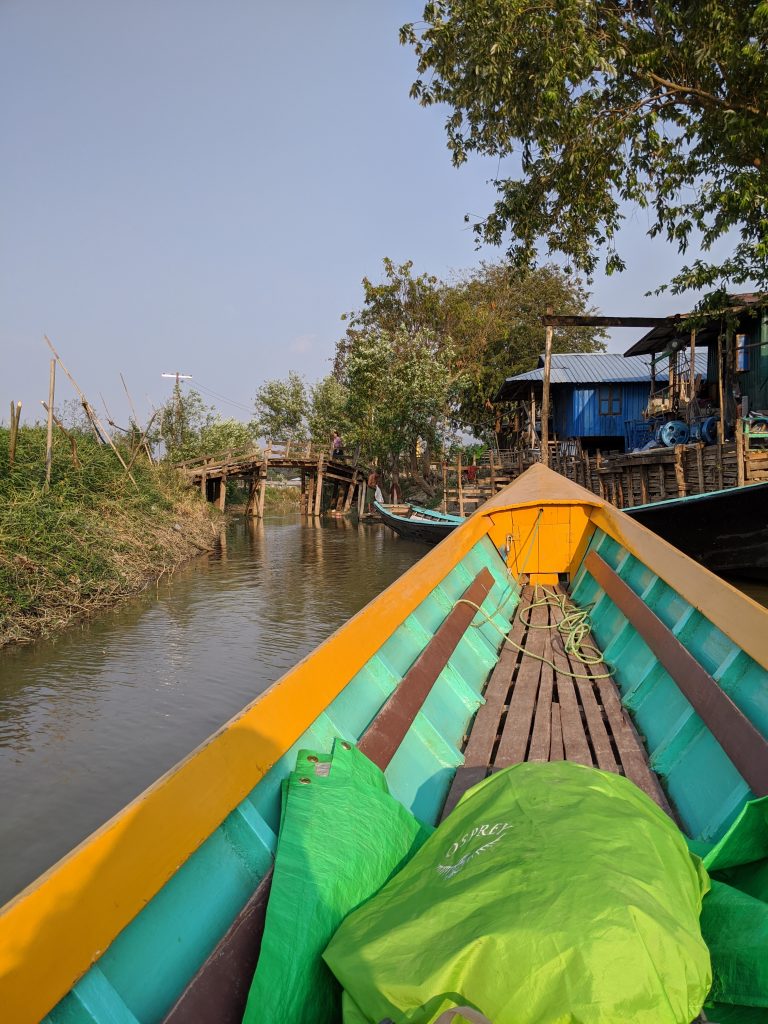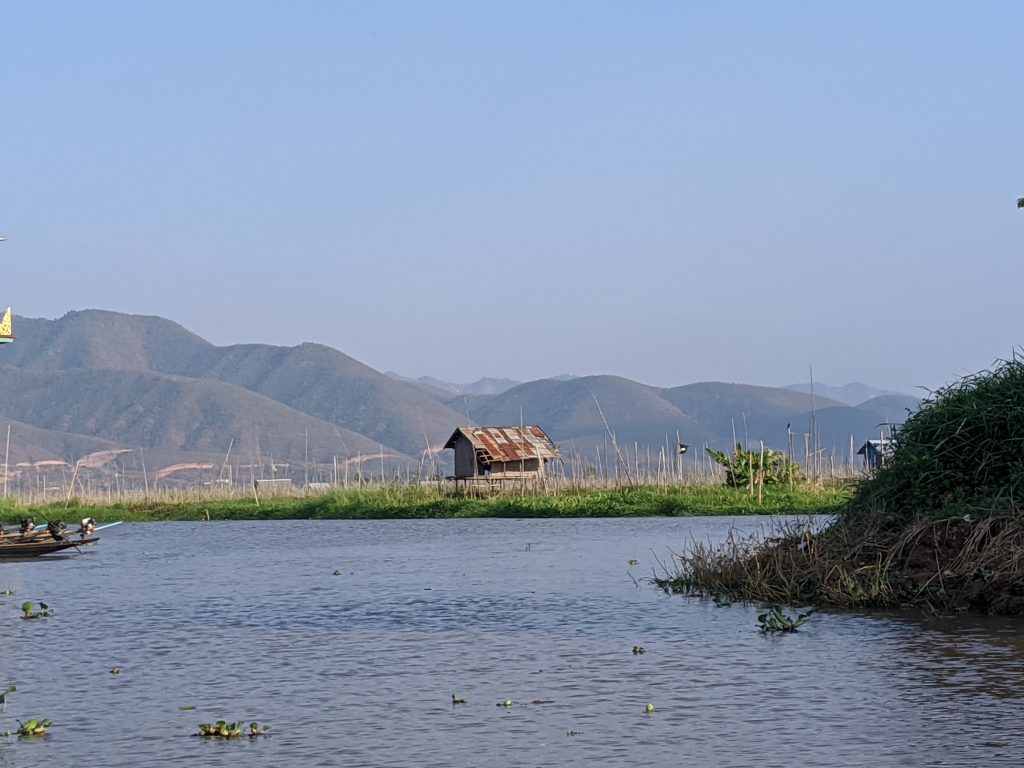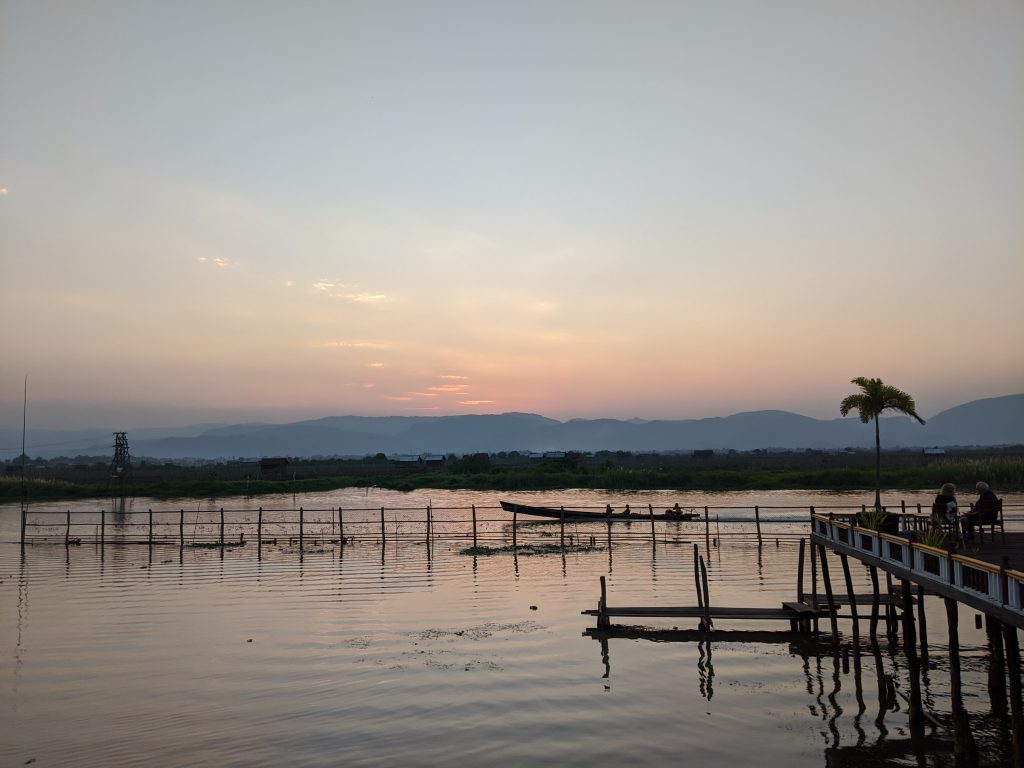This far into my trip, you’d think I’d learned my lesson with buses. This was not the case. I hate flying, and the small planes on the local airlines here have a good safety record but made me nervous nonetheless. So once again, I packed up my things and took a seven-hour bus ride from Bagan to Inle Lake.
I felt terrible when I arrived. Still recovering from the smoke of Bagan, I discovered that the only way to get to my hotel (I decided to splurge on a hotel room for my last nights in Myanmar) was to take a taxi to the lake and then take a boat. My head was pounding, and I was on the verge of falling asleep, but I didn’t have any other choice. I shuffled into the back of another taxi and headed to the coast.
Once I got on the water, none of those things mattered.
Since the trip took me almost an entire day, the sun was just beginning to set as my 40-minute boat ride to the hotel began. Local Intha fishermen were out on the water, balancing on the edge of their boats while maneuvering their large fishing nets. I’ve never seen anything quite like it.
Inle Lake was the most ‘touristy’ place I visited in Myanmar, but it’s easy to see it’s popular. The lake sits in a valley between 2 mountain range. It is beautiful, and I felt like I was exploring a totally different point in time.
Along the lake are a variety of shops and attractions looking to catch the eye of tourists passing through: silver shops, wineries, cigars, and silk/lotus weaving shops line the lake. The “Jumping Cat Monastery” has cats trained by monks that perform tricks and jump through hoops.
Although the closest Karen tribe, better known as the “long neck women,” live about six hours away, they make the trip to Inle Lake, making a living off of tourists looking for a quick picture. I have mixed feelings about this as it feels exploitive, but it was interesting to learn about the necklaces. They are purely cosmetic and the rings are seen as a sign of beauty and wealth.
The Phaung Daw U Pagoda is a large grand pagoda sitting right on the lake. The temple looks massive and majestic, especially next to the rest of the buildings that sit upon the lake.
For all of Inle Lake’s beauty, my favorite part was not the lake at all, but the Shwe Inn Dein Pagoda which sits at the end of a small estuary. Over sixteen hundred stupas are scattered throughout, some newer and restored, some crumbling remains of the originals built in the fourteenth century.
Around the temple are older, abandoned remains of smaller stupas and temples that have not stood the test of time. If you wander away from the path, they are easy to find, and they are everywhere.
I was thankful for my time at Inle Lake. It afforded me more leisurely exploring than I’ve allowed myself during my time in Myanmar. My next stop was supposed to be Hong Kong. Even though just a month ago, I had a layover in Hong Kong on my way to Singapore, the country is now completely locked down. Instead, I headed to Japan, which unknown to me at the time, would prove to be the last place on my journey before the pandemic abruptly forced me to return home.
